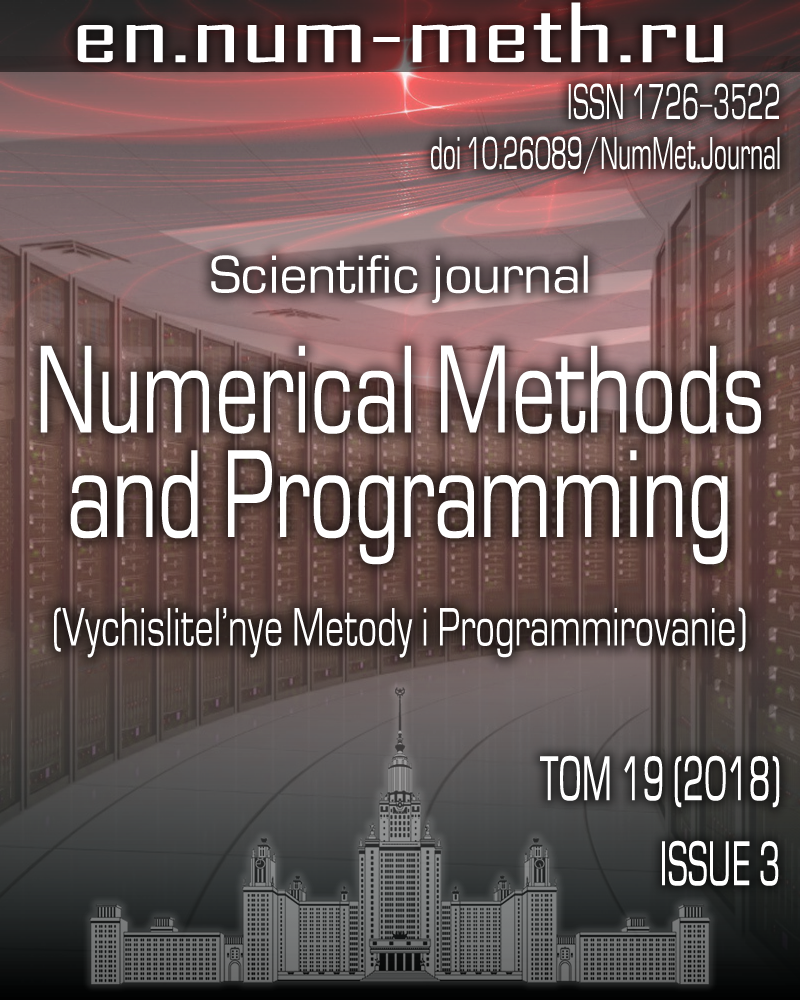DOI: https://doi.org/10.26089/NumMet.v19r327
Numerical analysis of parameter identifiability for a mathematical model of a chemical reaction
Keywords:
Abstract
The authors of this paper develop a numerical approach to analyze the parametric identifiability of chemical reaction models by the methods of sensitivity analysis for the efficient study and management of chemical reaction processes. The primary objective of this paper is to determine the parameters to be identified for the propylene pyrolysis process and to determine the insignificant parameters of the model. The 157-step detailed pyrolysis scheme of propane is reduced to the 30-step scheme. A kinetic model is proposed to analyze the low-temperature pyrolysis of propane. This model adequately describes the yield of observed reaction products at atmospheric pressure. The parameters of the kinetic model of propane pyrolysis are identified by solving the inverse problem of chemical kinetics.
Published
Issue
Section
References
- E. Walter, Identifiability of parametric models (Pergamon Press, New York, 1987).
- S. I. Spivak and V. G. Gorskii, “Non-Uniqueness of Problem of Kinetic Constant Reconstruction,” Dokl. Akad. Nauk SSSR 257 (2), 412-415 (1981).
- V. G. Gorskii and S. I. Spivak, “Identifiability of Parameters - One of the Most Important Steps in Constructing Mathematical Models in Chemistry,” Zh. Strukt. Khim. 29 (6), 119-125 (1988) [J. Struct. Chem. 29 (6), 924-930 (1989)].
- Kudashev V. P. and Spivak S. I., “Informativity of Kinetic Measurements under Determination of Mathematical Models Parameters of Non-Steady Chemical Kinetics,” Teor. Osn. Khim. Tekhnol. 26 (6), 872-879 (1992).
- L. F. Nurislamova and I. M. Gubaydullin, “Reduction of Detailed Schemes for Chemical Transformations of Formaldehyde and Hydrogen Oxidation Reactions Based on a Sensitivity Analysis of a Mathematical Model,” Vychisl. Metody Programm. 15, 685-696 (2014).
- L. F. Nurislamova and I. M. Gubaydullin, “Research and Reduction of Mathematical Model of Chemical Reaction by Sobol’ Method,” Comput. Issled. Model. 8 (4), 633-646 (2016).
- L. F. Nurislamova and I. M. Gubaydullin, “Mechanism Reduction of Chemical Reaction Based on Sensitivity Analysis: Development and Testing of Some New Procedure,” J. Math. Chem. 55 (9), 1779-1792 (2017).
- N. J. Brown, G. Li, and M. L. Koszykowski, “Mechanism Reduction Via Principal Component Analysis,” Int. J. Chem. Kinet. 29 (6), 393-414 (1997).
- M. S. Okino and M. L. Mavrovouniotis, “Simplification of Mathematical Models of Chemical Reaction Systems,” Chem. Rev. 98 (2), 391-408 (1998).
- A. S. Tomlin, T. Turányi, and M. J. Pilling, “Mathematical Tools for the Construction, Investigation and Reduction of Combustion Mechanisms,” in Comprehensive Chemical Kinetics (Elsevier, New York, 1997), Vol. 35, pp. 293-437.
- T. F. Lu and C. K. Law, “A Directed Relation Graph Method for Mechanism Reduction,” Proc. Combust. Inst. 30 (1), 1333-1341 (2005).
- T. Lu and C. K. Law, “Linear Time Reduction of Large Kinetic Mechanisms with Directed Relation Graph: n-Heptane and Iso-Octane,” Combust. Flame 144 (1-2), 24-36 (2006).
- A. S. Tomlin, M. J. Pillinc, T. Turányi, et al., “Mechanism Reduction for the Oscillatory Oxidation of Hydrogen: Sensitivity and Quasi-Steady-State Analyses,” Combust. Flame 91 (2), 107-130 (1992).
- T. Turányi, “Sensitivity Analysis of Complex Kinetic Systems. Tools and Applications,” J. Math. Chem. 5 (3), 203-248 (1990).
- A. Saltelli, M. Ratto, S. Tarantola, and F. Campolongo, “Sensitivity Analysis for Chemical Models,” Chem. Rev. 105 (7), 2811-2828 (2005).
- I. A. Semiokhin, Physical Chemistry (Mosk. Gos. Univ., Moscow, 2001) [in Russian].
- L. S. Polak (Ed.), Application of Computational Mathematics in Chemical and Physical Kinetics (Nauka, Moscow, 1969) [in Russian].
- I. M. Sobol’, “On Sensitivity Estimation for Nonlinear Mathematical Models,” Mat. Model. 2 (1), 112-118 (1990).
- L. F. Nurislamova, Development of a Compact Kinetic Model for Propane Pyrolysis by Sensitivity Analysis Methods , Candidate’s Dissertation in Mathematics and Physics (Bashkir State Univ., Ufa, 2015).
- O. A. Stadnichenko, L. F. Nurislamova, N. S. Masyuk, et al., “Radical Mechanism for the Gas-Phase Thermal Decomposition of Propane,” Reac. Kinet. Mech. Cat. 123 (2), 607-624 (2018).
- I. M. Sobol’, “Uniformly Distributed Sequences with an Additional Uniform Property,” Zh. Vychisl. Mat. Mat. Fiz. 16 (5), 1332-1337 (1976) [USSR Comput. Math. Math. Phys. 16 (5), 236-242 (1976)].
- E. M. Chainikova, A. R. Yusupova, S. L. Khursan, et al., “Interplay of Conformational and Chemical Transformations of Ortho-Substituted Aromatic Nitroso Oxides: Experimental and Theoretical Study,” J. Org. Chem. 82 (15), 7750-7763 (2017).
- K. F. Koledina, S. N. Koledin, N. A. Shchadneva, and I. M. Gubaidullin, “Kinetics and Mechanism of the Catalytic Reaction between Alcohols and Dimethyl Carbonate,” Zh. Fiz. Khim. 91 (3), 422-428 (2017) [Russ. J. Phys. Chem. A. 91 (3), 442-447 (2017)].


